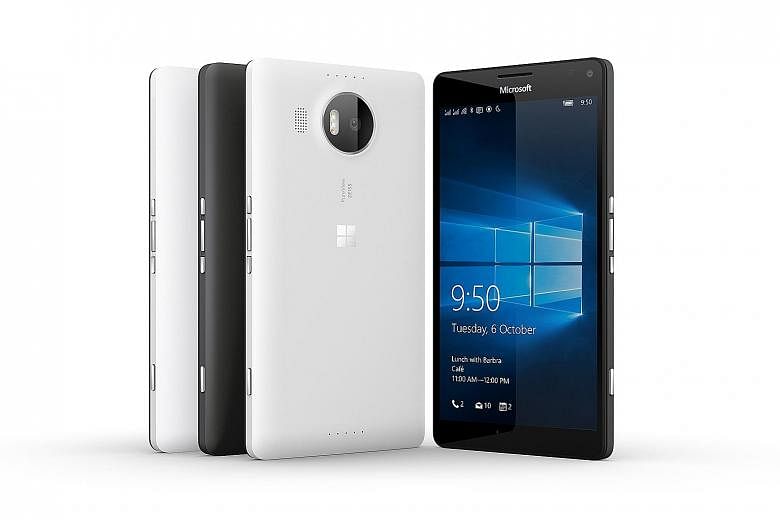Microsoft launched its top Lumia smartphones last week. The 5.7-inch Lumia 950 XL and 5.2-inch Lumia 950 are premium models with similar high-end hardware. The larger phone has a flagship Qualcomm Snapdragon 810 processor, while the smaller one uses a Qualcomm Snapdragon 808. The 950 XL has a larger 3,300mAh battery compared to the 950 (3,000mAh).
Both phones come with an Amoled screen with a 2,560 x 1,440 pixel resolution. Unlike LCD displays, Amoled screens offer deeper blacks and excellent contrast ratios. The one on the Lumia 950 looks great, with excellent viewing angles.
The Amoled screen is more power efficient when displaying blacks. This component complements the Lumia 950's Glance feature that shows the time, date, e-mail and missed calls on the phone's screen without having to unlock the phone.
Compared with the colourful Lumia phones of the past, the 950 XL is fairly sedate in black or white. But the back cover is removable (a leather-clad back is available) and you can swop the battery or add more storage with a microSD card.
Strangely, the power button is on the right, between the volume buttons. The phone does have a dedicated physical button for the camera.
And this camera is fast. Shots are taken almost instantaneously the moment you press the button. The camera sensor is 20 megapixels with built-in optical image stabilisation and a f/1.9 aperture. Microsoft touts that the presence of a third LED flash helps to create more natural-looking images with more accurate skin tone colours. From my short time with it, the triple LED flash does make my face look less pale in the images taken.
Other hardware specifications on the 950 XL include 3GB of RAM, 32GB of internal storage and support for Qi wireless charging. The phone uses a Type-C USB port for charging. This port also connects to the optional Microsoft Display Dock, which has a DisplayPort connection for monitors, and three normal USB ports for peripherals such as a keyboard and a mouse.
When you connect the 950 XL to the Display Dock, the Continuum feature in Windows 10 Mobile, which creates a desktop-like feel, will be triggered. You will see a Windows desktop that is almost identical to the one on a Windows PC.
Standard Windows keyboard shortcuts will also work. Universal Windows apps such as Microsoft Office 365 will resemble their desktop versions when used in Continuum mode, instead of the mobile interface. And amazingly, you can still use the phone and run other apps even while the monitor is displaying a universal Windows app.
In short, your phone becomes your PC with the right accessories. Of course, developers need to build their apps with this in mind to make it work seamlessly, but this is potentially the killer feature that differentiates Windows 10 phones from its rivals.
Microsoft has not revealed the local pricing and availability for the Lumia phones. In the US, the Lumia 950 XL is priced at US$649 (S$907), while the 950 costs US$549. Both models will be available in the US next month.
Vincent Chang

